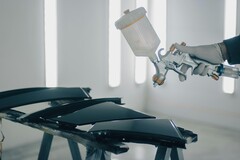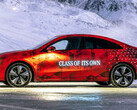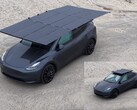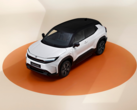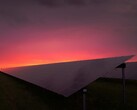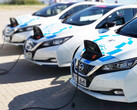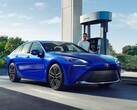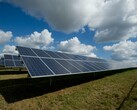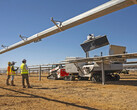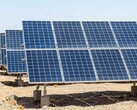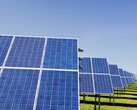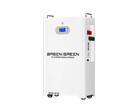Electric vehicles (EVs) are gaining popularity as the world shifts toward cleaner energy, but one challenge persists—range anxiety. Drivers often worry about running out of charge on long journeys or spending too much time at charging stations. Now, Mercedes-Benz is working on a groundbreaking solution that could make EVs more self-sufficient: solar paint.
This tech turns the entire car body into a power generator by integrating solar modules into a paint-like layer. With a 20% efficiency rate, the paint captures sunlight and converts it into electricity, feeding directly into the vehicle’s high-voltage battery. Covering an area of about 11 square meters—similar to the surface area of a mid-sized SUV—this solar paint could generate enough energy to power an electric car for up to 12,000 kilometers (~7456 miles) annually under ideal conditions.
How solar paint works
The key to Mercedes-Benz’s solar paint lies in wafer-thin solar cells that can be simply applied to the car’s body, regardless of its shape or design. Unlike traditional solar panels mounted on roofs, solar paint can cover all exterior surfaces.
The energy produced doesn’t just power the car during drives; it continues generating electricity even when the vehicle is parked. This allows for longer ranges and fewer charging stops while also creating opportunities to use surplus energy for homes or the power grid via bidirectional charging. However, it does raise questions - like what about all the excess energy accumulated in this manner? How will that be dealt with? Mercedes-Benz hasn't made that clear in its press release, but the excess energy could power homes (V2H, or vehicle-to-home), feed energy back to the grid (V2G, or vehicle-to-grid), charge other EVs (V2V, or vehicle-to-vehicle), or be stored for future driving needs.
Real-world examples and potential
The effectiveness of solar paint depends on sunlight exposure, which varies by location. For example, Mercedes-Benz drivers in Stuttgart, Germany, travel around 52 kilometers daily. Solar paint could cover about 62% of that distance using solar energy alone. In sunnier cities like Los Angeles, cars could generate a surplus of energy, covering 100% or more of daily driving needs, Mercedes claims.
This development could ease range concerns while cutting energy costs for EV owners. Additionally, Mercedes-Benz ensures the paint is sustainable, as it contains no rare earths or silicon, uses non-toxic materials, and is easy to recycle—which makes it both environmentally friendly and cost-effective.
The road to sustainable driving
Solar paint is still in its research phase, but its potential is undeniable. By enabling EVs to generate their own energy, it reduces reliance on charging infrastructure and makes electric cars an even more practical option for drivers worldwide. For now, carmakers like Hyundai and Toyota are using traditional solar panels in some of their EV models. But if Mercedes-Benz successfully brings its solar paint to market, it could reshape clean transportation.




